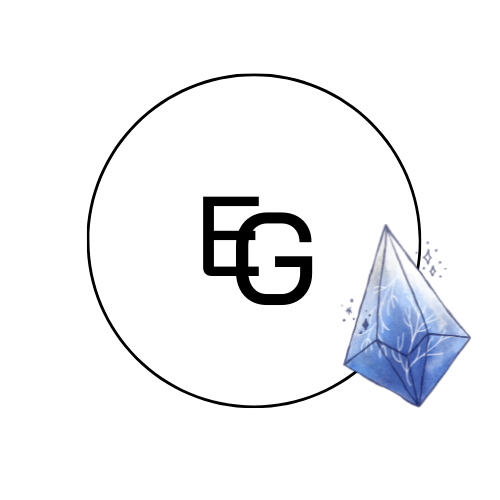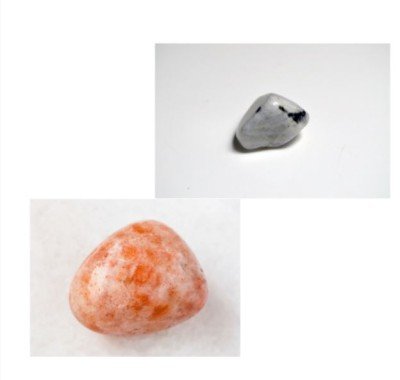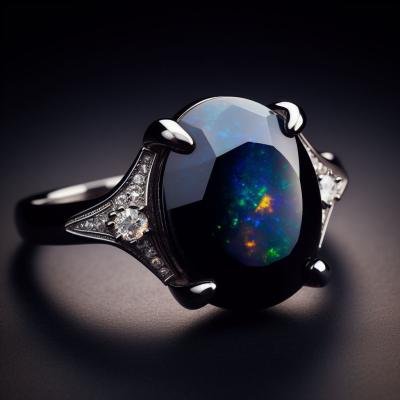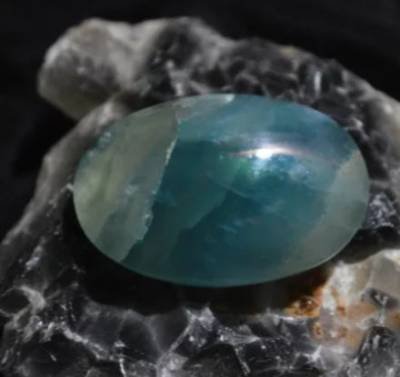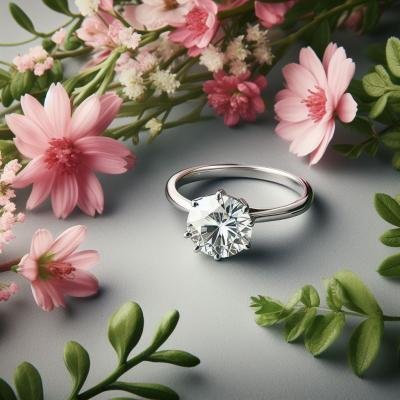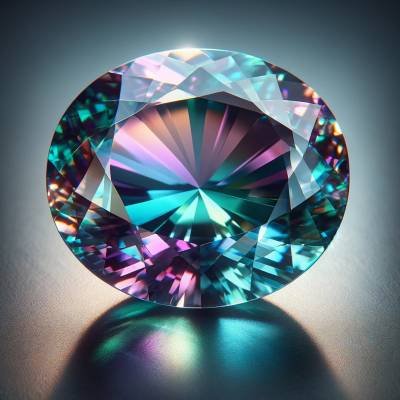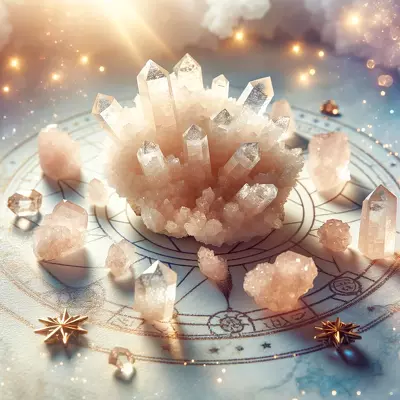The Radiant Dance of Light: Discovering the Sunstone and Moonstone Combination
Sunstones, with their radiant shimmer and moonstones capturing the ethereal glow of moonlight, have intrigued many for generations. When combined, these gemstones create a harmonious blend, reflecting both the energy of the sun and the calming aura of the moon. Their union in jewelry and spiritual practices offers a unique balance that has been celebrated in various cultures. This article explores the mystique surrounding this powerful duo.
I. Introduction
Sunstones, with their radiant shimmer and moonstones capturing the ethereal glow of moonlight, have long fascinated humanity. This article seeks to delve deeper into the world of these gemstones, individually and in combination, uncovering their origins, significance, and the magic they create when brought together.
A. Origins of Sunstone and Moonstone
Sunstone, often associated with the brilliance of sunlight, hails from regions with mineral-rich soils, including parts of India, Canada, and the United States. Moonstone, on the other hand, has an enigmatic origin, with sources scattered across the globe, from Sri Lanka to the mountains of Norway. Both these gemstones have been treasured since ancient times, known not only for their beauty but also their supposed mystical properties.
B. Historical Significance
Historically, sunstones were believed to have been used by the Vikings for navigation due to their unique optical properties. Ancient Egyptians, too, revered the sunstone, considering it a stone of warmth and life. Moonstone, echoing the luminescence of the moon, was held in high regard in many cultures, particularly in India and Rome, where it was associated with lunar deities and believed to bring good fortune.
II. The Aesthetics of Sunstone and Moonstone Combination
When sunstone and moonstone are paired, the result is a visual treat. Their contrasting yet harmonious colors and shines create a unique blend that is both captivating and serene.
A. Physical Characteristics of Each Stone
Sunstones boast a spangled appearance, often with a golden or reddish hue, thanks to the presence of tiny copper or hematite inclusions. Moonstones, meanwhile, possess an adularescence—a soft, milky sheen—that can range from silvery blue to peach, depending on its mineral composition.
B. Complementary Visual Elements
Together, the fiery brilliance of the sunstone and the cool shimmer of the moonstone create a balance. This juxtaposition, much like the dance of day and night, offers a duality that is both visually and symbolically powerful.
III. Spiritual and Therapeutic Properties
Beyond their physical beauty, both sunstone and moon are believed to have a myriad of spiritual and therapeutic benefits that enhance the wearer’s well-being.
A. Individual Properties of Sunstone
Sunstone is often associated with the radiant energy of the sun. It is believed to instill joy, inspire leadership, and boost self-confidence. Many also turn to sunstone for its purported ability to clear negative energies, making it a favorite for those seeking emotional healing. Moreover, it’s often linked with the sacral chakra, which governs creativity and passion.
B. Individual Properties of Moonstone
Moonstone, as its name suggests, resonates with the energy of the moon. It’s often associated with intuition, inner growth, and strength. Historically, it has been used to enhance psychic abilities and to develop clairvoyance. Its connection to the moon gives it ties to cycles, making it a stone for reflection, balance, and new beginnings. It’s particularly revered for its influence on the crown and third-eye chakras.
C. Combined Energy and Synergy
When sunstone and moonstone are paired, their energies complement and amplify each other. The sunstone’s warmth and vitality meet the calming, reflective properties of moonstone, creating a balanced force. Wearers often report feeling a harmonious blend of motivation and relaxation, providing a sense of holistic well-being.
IV. Use in Jewelry and Ornamentation
The sunstone and moonstone combination has been celebrated in various forms of jewelry and decorative items for centuries.
A. Traditional Uses
In ancient cultures, these stones were set in amulets, rings, and ceremonial pieces, believed to offer protection, prosperity, and clarity. Sunstone, for its part, was often set in pieces representing the sun, while moonstone adorned items symbolizing the moon or night.
B. Modern Jewelry Designs and Trends
Today, the combination is popular in contemporary jewelry designs. From elegant necklaces to statement rings, the blend of sunstone and moonstone offers a versatile aesthetic appeal. Designers appreciate the play of color and light, using them in pieces that can be both everyday wear and special occasion adornments.
C. Maintenance and Care
Both sunstone and moonstone require gentle care to maintain their luster. Avoiding direct sunlight, high temperatures, and harsh chemicals is essential. Cleaning with a soft cloth and mild, soapy water will help preserve their beauty.
V. The Cultural and Mythological Significance
Both stones have deep roots in myth and legend, symbolizing various aspects of human experience.
A. Stories and Legends Involving Sunstone
In Norse mythology, sunstones were believed to guide Vikings through the fog, acting as a compass. Native American cultures viewed the stone as a piece of the sun, using it in rituals to bring warmth and light.
B. Moonstone in Folklore and Mythology
Moonstone has been revered in various cultures as a stone of the gods and goddesses. In Hindu mythology, it’s associated with the moon god Chandra and is said to be made from moonbeams. In Roman legends, it was believed to capture the image of Diana, the moon goddess, granting love and wisdom.
C. The Unified Symbolism in Different Cultures
While sunstone and moonstone originate from different myths and stories, their combined symbolism speaks universally of balance—of the fiery determination of the sun and the calming introspection of the moon, creating a duality that resonates across cultures.
VI. FAQs
Q: Do sunstones and moonstones work well together?
A: Yes, sunstone and moonstone complement each other beautifully, both aesthetically and energetically. Their combined energies are believed to bring balance, harmony, and a sense of holistic well-being to the wearer.
Q: Are moonstones and sunstones the same?
A: No, while both are feldspar minerals, they have distinct compositions, appearances, and energies. Sunstone often has a spangled appearance with a reddish or golden hue, while moonstone is known for its adularescence, giving it a soft, shimmering glow.
Q: What is sunstone moonstone good for?
A: Apart from their aesthetic appeal in jewelry, the combination is believed to offer spiritual benefits. Sunstone is associated with vitality, joy, and leadership, while moonstone is linked to intuition, balance, and inner growth. Together, they provide a harmonious blend of energies.
Q: What does sunstone and moonstone make?
A: In jewelry, the combination can be crafted into rings, necklaces, earrings, and bracelets. They are also used in ornamental pieces, talismans, and amulets due to their believed spiritual properties.
Q: How do I care for sunstone and moonstone jewelry?
A: Both stones require gentle care. It’s best to avoid direct sunlight, extreme temperatures, and harsh chemicals. Cleaning with a soft cloth and mild, soapy water will help maintain their shine and luster.
Q: Is the sunstone and moonstone combination expensive?
A: The cost varies based on the quality, size, and craftsmanship involved. While high-quality pieces can be pricey, there are affordable options available, making the combination accessible to various budgets.
Q: Can I wear sunstone and moonstone every day?
A: Yes, they can be worn daily. However, given their relative softness, it’s essential to handle them with care to prevent scratches or damage.
Q: What are the metaphysical properties of azurite?
A: Azurite is a deep blue mineral often associated with intuition, insight, and mental enhancement. It is believed to stimulate the third eye chakra, enhancing creativity, spiritual connection, and psychic abilities. Metaphysically, it is used to clear confusion, reduce stress, and open the mind to new perspectives.
Q: What is the spiritual meaning of ammonite?
A: Ammonite, a fossilized sea creature, is regarded as a protective and grounding stone. Spiritually, it is said to embody the spiraling force of the universe and promote personal growth and a connection to Earth’s energy. It is also believed to attract health, prosperity, and success, encourage deep meditation, and provide clarity.
VII. Conclusion
A. The Timeless Appeal of the Combination
Sunstone and moonstone, in their combined form, offer a timeless beauty that transcends epochs. Their duality, reminiscent of day and night, fire and water, has captivated hearts and imaginations for generations.
B. Importance in Modern Day
Today, the combination holds relevance not just as an elegant jewelry choice but also as a symbol of balance and harmony. In an increasingly chaotic world, many are drawn to their combined energies, seeking peace and equilibrium.
C. Encouraging Continued Exploration
While we’ve delved deep into the world of sunstone and moonstone, there remains much to discover. Their rich history, varied uses, and cultural significance beckon a continued exploration into their mystique.
VIII. Suggested Readings
The world of gemstones is vast and enchanting. For those keen on delving further, the following titles provide a comprehensive exploration:
- “Gems of the World” by Cally Hall: An exhaustive guide that dives into the history, geography, and properties of over 130 gemstones.
- “Crystal Bible” by Judy Hall: A definitive reference work detailing the spiritual and healing properties of crystals, including sunstone and moonstone.
- “The Book of Stones: Who They Are and What They Teach” by Robert Simmons and Naisha Ahsian: This book offers insights into the world of gemstones and their transformative powers.
- “Moonstone Magic: A History and Appreciation” by Linda Malcor: Dive deep into the world of moonstone, from its mythological significance to its use in the modern day.
- “The Sunstone Odyssey: Myths and Facts” by Donna Fisher: An in-depth look into the origins, myths, and realities surrounding the enigmatic sunstone.
Whether you’re a casual enthusiast or a dedicated gemologist, these readings promise to expand your understanding of gemstones and the fascinating world they inhabit. Dive deep into their histories, mysteries, and unique attributes that have captivated humans for millennia.
